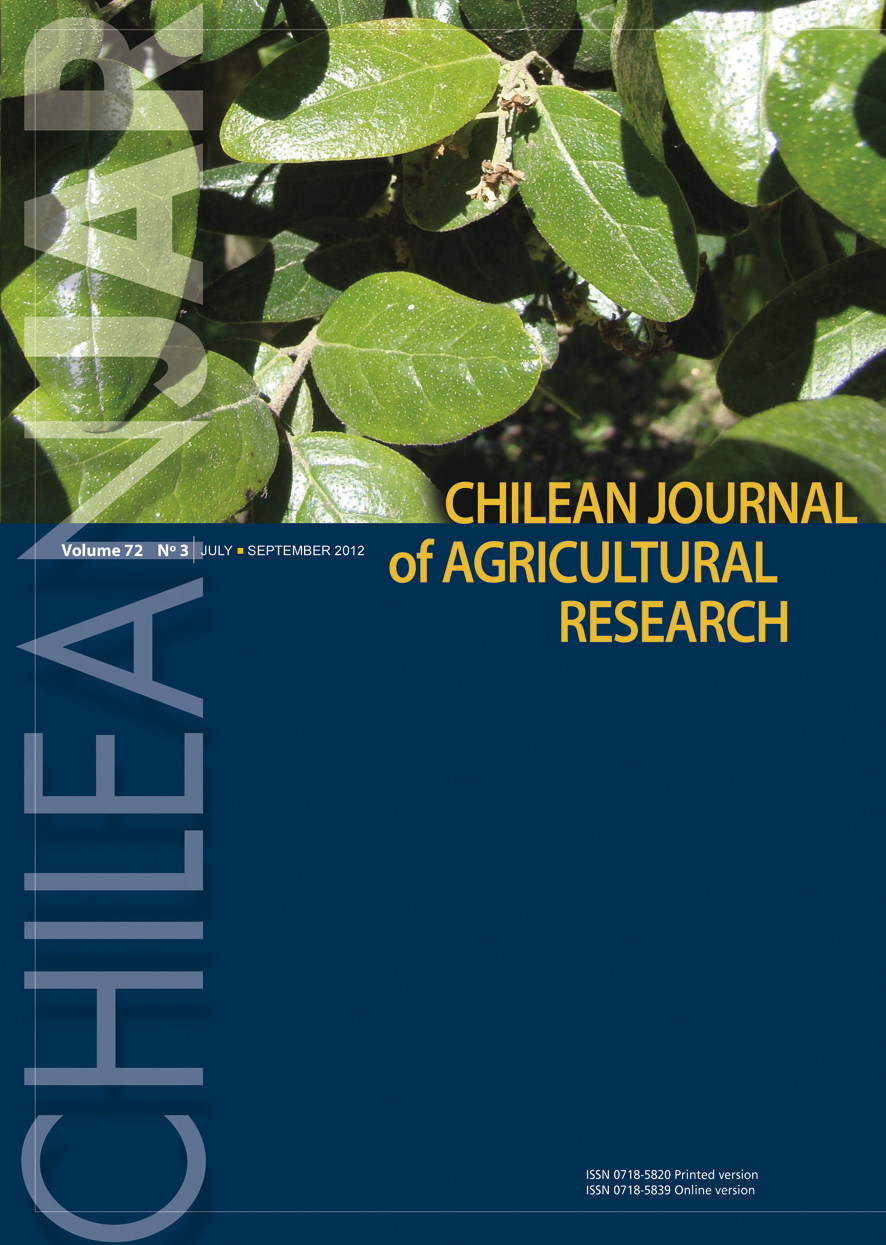
|
Chilean Journal of Agricultural Research
Instituto de Investigaciones Agropecuarias, INIA
ISSN: 0718-5820
EISSN: 0718-5820
Vol. 71, No. 2, 2011, pp. 267-274
|
 Bioline Code: cj11032
Bioline Code: cj11032
Full paper language: English
Document type: Research Article
Document available free of charge
|
|
|
Chilean Journal of Agricultural Research, Vol. 71, No. 2, 2011, pp. 267-274
| en |
Unconfined aquifer permeability near hand-dug wells in the coastal and interior dryland of the Libertador General Bernardo O’Higgins Region, Chile
Rupp, David E.; Reckmann, Oscar; Vergara, Jorge; Uribe, Hamil & Selker, John S.
Abstract
In the dryland of the Libertador General Bernardo O’Higgins Region in Chile, most farmers rely on wide and shallow hand-dug wells as their primary source of water during the dry summer. Few of these wells have sufficient yield for more than domestic use (human consumption, livestock, and irrigation of a subsistence garden). To more accurately assess available groundwater resources, saturated hydraulic conductivity (K) of aquifers in the eight counties that comprise this region’s dryland was estimated using evacuation and recovery tests in 353 hand-dug wells. K followed a log-normal distribution and ranged over nearly five orders of magnitude. County median K varied by a factor of 5 and a slight increasing K trend in the southward direction. In one northern county, less than 4% of the sites had K > 4 m d-1. In the t two southernmost counties, approximately one-quarter of the K values exceeded 4 m d-1. This is approximately the minimum K required for a typical well (1 m diameter and 3 m depth below the water table) to yield 1 L s-1 of water, which is roughly the yield required to irrigate 1 ha. Aquifers located where parent material was predominantly intrusive granite had slightly higher and statistically significant K than those formed predominantly of metamorphic and sedimentary rock. A semi-variogram of K provided weak evidence of a characteristic length scale of approximately 4 km.
Keywords
Groundwater, well recovery, slug-test.
|
| |
| es |
Permeabilidad de acuíferos no-confinados cerca de pozos norias en el Secano Costero e Interior, Región del Libertador General Bernardo O’Higgins, Chile
Rupp, David E.; Reckmann, Oscar; Vergara, Jorge; Uribe, Hamil & Selker, John S.
Resumen
La mayoría de los agricultores del secano de la Regióndel Libertador General Bernardo O’Higgins depende de pozos noria, constituyendo su principal fuente de agua durante el verano. Pocos pozos tienen rendimiento suficiente para un uso mayor que el doméstico (consumo humano, ganadería y riego). A fin de evaluar con mayor precisión los recursos hídricos subterráneos disponibles,mediante pruebas de bombeo-recuperación se estimó la conductividad hidráulica saturada (K) de los acuíferos en 353 pozos distribuidos en ocho comunas del área. K siguió una distribución log-normal, con una K máxima casi cinco órdenes de magnitud mayor que la mínima. La mediana de K varió en un factor de 5 por comuna y tuvo una ligera tendencia creciente en dirección Sur. En una comuna del Norte, se estimó que menos del 4% de los sitios presentaron K > 4 m d-1. En dos comunas del Sur, alrededor del 25% de los valores de K superaron los 4 m d-1, valor mínimo requerido para que un pozo de dimensiones típicas (1 m de diámetro y 3 m de profundidad bajo el nivel de agua) produzca 1 L s-1 de agua, suficiente para regar 1 ha. Los acuíferos localizados en áreas con material predominantemente granítico, tuvieron levemente mayores K, estadísticamente significativos, que los formados predominantemente de rocas metamórficas y sedimentarias. El semi-variograma de K indicó un rango de dependencia de 4 km.
Palabras-clave
aguas subterráneas, recuperación de pozos, slug-test.
|
| |
© Copyright 2010 Chilean Journal of Agricultural Research.
Alternative site location: http://www.inia.cl
|
|
